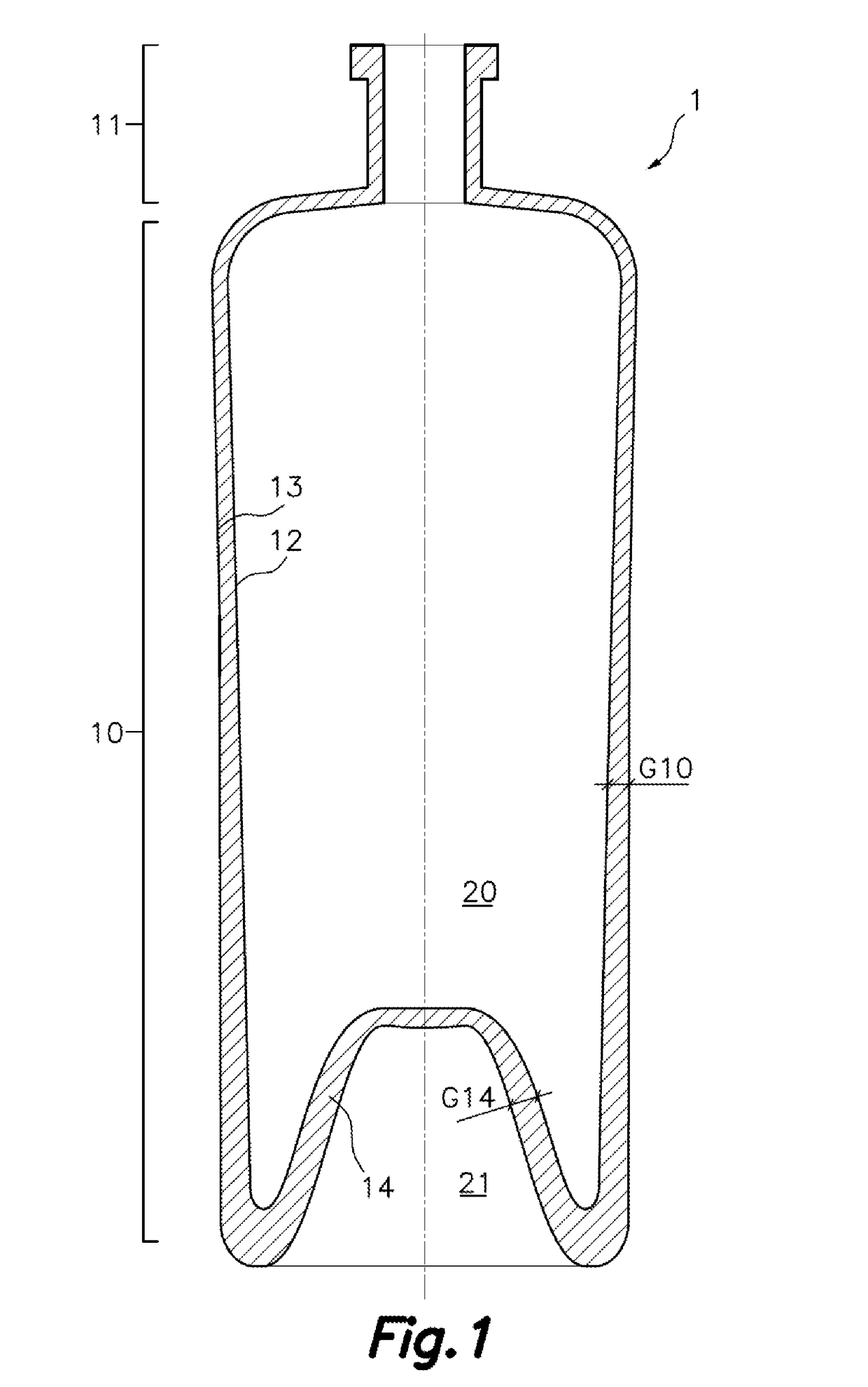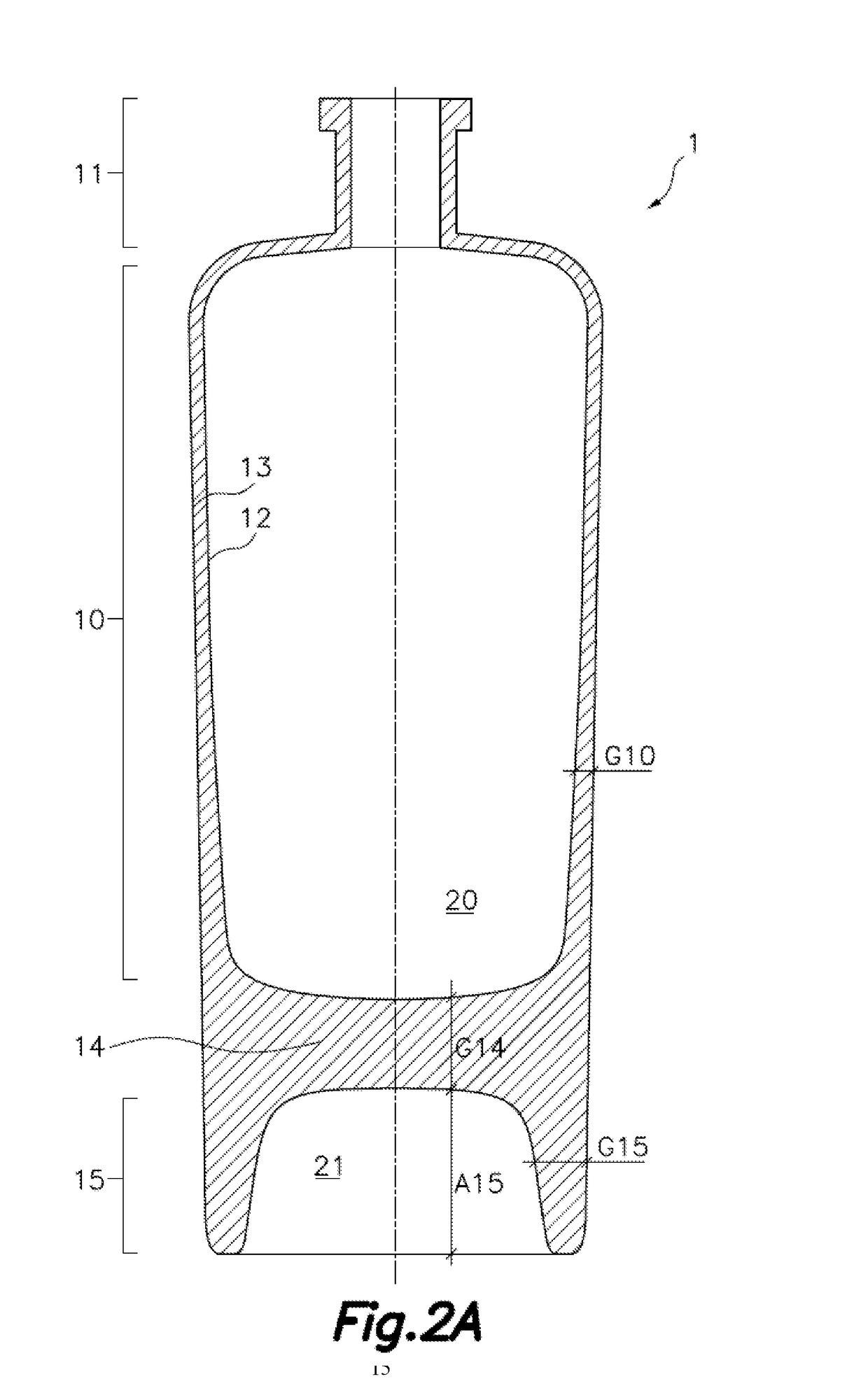Glass Bottle
a glass bottle and glass technology, applied in the field of glass bottles, can solve the problems of not allowing or suggesting the manufacture of bottles provided with technical, heavy bottles with a large consumption of materials, and not allowing a visual effect, so as to achieve the effect of saving glass, reducing the thickness of the bottom wall, and being more efficien
- Summary
- Abstract
- Description
- Claims
- Application Information
AI Technical Summary
Benefits of technology
Problems solved by technology
Method used
Image
Examples
Embodiment Construction
[0060]According to a non-limiting exemplary embodiments shown in FIGS. 2A and 2B, there is proposed a glass bottle 1 suitable for holding liquids, such as drinks or perfumes, said bottle 1 being formed by a neck 11 jointed in continuity to a receptacle tubular wall 10 through, for instance, transitional shoulders, and the receptacle tubular wall 10 being jointed in continuity to a bottom wall 14. The juncture of the neck 11, the receptacle tubular wall 10 and the bottom wall 14 defines the receptacle 20 therein destined to hold liquids.
[0061]The neck 11 is prepared to be capable of being hermetically sealed by means of a cap, in this exemplary embodiment by means of a cork cap inserted by means of force-fitting in said neck, but other materials, such as glass, are also very commonly used.
[0062]In the FIG. 2A exemplary embodiment, the receptacle tubular wall 10 is a hollow cylinder and the bottom wall 14 is circular, their diameters being coincident and the receptacle tubular wall 10...
PUM
 Login to View More
Login to View More Abstract
Description
Claims
Application Information
 Login to View More
Login to View More - R&D
- Intellectual Property
- Life Sciences
- Materials
- Tech Scout
- Unparalleled Data Quality
- Higher Quality Content
- 60% Fewer Hallucinations
Browse by: Latest US Patents, China's latest patents, Technical Efficacy Thesaurus, Application Domain, Technology Topic, Popular Technical Reports.
© 2025 PatSnap. All rights reserved.Legal|Privacy policy|Modern Slavery Act Transparency Statement|Sitemap|About US| Contact US: help@patsnap.com



